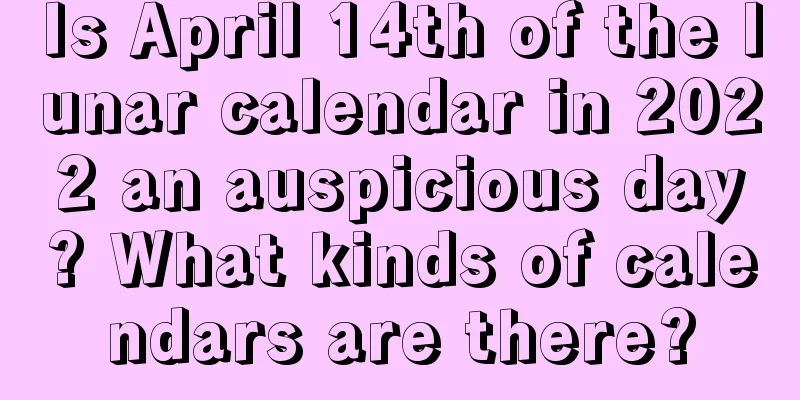Five Spring Festival stories: Staying up all year round to post Spring Festival couplets and other stories

Introduction: The Spring Festival is the most grand and traditional festival for us Han people. Many ethnic minorities also have the custom of celebrating the Spring Festival, so there are many customs about the Spring Festival. There are some interesting legends and stories about the customs of the Spring Festival. I will introduce them to you one by one below. Come and learn about them! There is no end to the topics about the Spring Festival, so do you want to know more about it? Just continue to wander in Mr. Shui Mo’s Spring Festival special ocean!Spring Festival Story 1: Staying Up All NightIn ancient times, there was a ferocious monster that lived in the deep mountains and dense forests. People called it "Nian". It has a hideous appearance and a cruel nature. It feeds on birds, beasts, and shellfish. Its taste changes every day, from praying mantis to living humans, making people shudder at the mention of the word "Nian". Later, people slowly understood the activity pattern of "Nian". It would sneak into places where people gathered to taste fresh food every 365 days. It would appear after dark and return to the mountains and forests at dawn when the cocks crowed. After calculating the date when "Nian" would wreak havoc, the people regarded this terrible night as a critical point, called it "New Year's Eve", and came up with a whole set of ways to get through the New Year's Eve: on this night, every household would prepare dinner in advance, turn off the fire and clean the stove, then lock the chicken coop and cattle pen, seal the front and back doors of the house, and hide in the house to eat the "New Year's Eve dinner". Since this dinner had an uncertain implication of good or bad luck, it was prepared very sumptuously. In addition to the whole family gathering together to dine to express harmony and reunion, they must also offer sacrifices to their ancestors before eating, praying for the blessings of their ancestors' spirits and spending the night safely. After dinner, no one dared to sleep, and they all sat together chatting to give themselves courage. Gradually, the custom of staying up all night on New Year's Eve was formed.Spring Festival Story 2: Wannian's Calendar CreationAccording to legend, in ancient times, there was a young man named Wannian. Seeing that the festivals were very chaotic, he wanted to set standard festivals. But he was struggling to find a way to calculate time. One day, he went up the mountain to chop wood and was tired, so he sat down under a tree to rest. The movement of the tree shadows inspired him, and he designed a sundial to measure the sun's shadow and time to determine the length of a day. Later, the dripping spring on the cliff inspired his inspiration, and he made a five-layer clepsydra to calculate time. Over time, he discovered that every 360 days or so, the four seasons cycled and the length of the day repeated itself. The king at that time was called Zu Yi, and he was often troubled by the unpredictable weather. After Wannian knew about this, he took the sundial and clepsydra to see the emperor and explained to Zu Yi the principle of the movement of the sun and the moon. After hearing this, Zu Yi was very pleased and felt it made sense. So Wannian was left behind and the Sun and Moon Pavilion was built in front of the Temple of Heaven, along with a sundial and a clepsydra pavilion. They also hoped to accurately measure the patterns of the sun and the moon, calculate the exact time of dawn and dusk, create a calendar, and benefit the common people of the world. Once, Zu Yi went to learn about the progress of the Wannian test calendar. When he climbed up the Sun and Moon Altar, he saw a poem engraved on the stone wall beside the Temple of Heaven: The sun rises and sets three hundred and sixty times, and it starts over again in a cycle. The growth and withering of plants are divided into four seasons, and there are twelve full moons in a year. Knowing that Wannian had completed the creation of the calendar, he personally went to the Sun and Moon Pavilion to visit Wannian. Wannian pointed to the sky and said to Zu Yi: "Now the twelve months are full, the old year has ended, and the new year has begun. I pray that the king will set a festival." Zu Yi said: "Spring is the beginning of the year, so let's call it the Spring Festival." It is said that this is the origin of the Spring Festival. Winter goes and spring comes, year after year, Wannian has developed an accurate solar calendar after long-term observation and careful calculation. When he presented the solar calendar to his successor monarch, his face was already covered with silver beard. The king was deeply moved, and to commemorate Wannian's achievements, he named the solar calendar the "Wannian Calendar" and named Wannian the "Sun and Moon Longevity Star". Later, people hung up pictures of the God of Longevity during the New Year, reportedly to commemorate the highly respected Wan Nian.Spring Festival Story 3: Pasting Spring Festival Couplets and Door GodsIn ancient Chinese mythology, it is said that there is a ghost world. In the middle of the world, there is a mountain. On the mountain, there is a huge peach tree covering three thousand miles. On the top of the tree, there is a golden rooster. Every morning when the golden rooster crows, the ghosts that wander out at night must rush back to the ghost realm. The gate to the ghost realm is located in the northeast of the peach tree. Two gods named Shentu and Yulei stand beside the gate. If a ghost did something harmful to the world at night, Shentu and Yulei would immediately find and catch it, tie it up with a rope made of reed, and feed it to the tiger. Therefore, all the ghosts in the world are afraid of Shentu and Yulei. So people began to carve their images out of peach wood and place them at their doorsteps to ward off evil and harm. Later, people simply carved the names of Shentu and Yulei on peach wood boards, believing that doing so could also suppress evil. This kind of peach wood board was later called "Tao Fu". In the Song Dynasty, people began to write couplets on peach wood boards. First, to retain the meaning of peach wood in warding off evil spirits, second, to express their good wishes, and third, to decorate the door for beauty. People also write couplets on red paper, which symbolizes happiness and good luck, and paste them on both sides of doors and windows during the New Year to express their good wishes for good luck in the coming year. In order to pray for the family's happiness, longevity and health, people in some places still retain the habit of pasting door gods. It is said that if two door gods are posted on the door, all demons and monsters will be afraid. In folk culture, door gods are symbols of righteousness and military power. The ancients believed that people with unusual appearances often have magical qualities and extraordinary abilities. They are upright and kind-hearted. Catching ghosts and demons is their nature and responsibility. The ghost-catching master Zhong Kui, who is admired by people, has such a strange appearance. Therefore, the folk door gods always have glaring eyes, ferocious faces, and various traditional weapons in their hands, ready to fight against any ghosts who dare to come to the door. Since the doors of Chinese houses usually open opposite each other, door gods are always in pairs. After the Tang Dynasty, in addition to the two generals Shentu and Yulei, people also regarded Qin Shubao and Yuchi Gong, two Tang Dynasty generals, as door gods. According to legend, when Emperor Taizong of Tang was ill, he heard ghosts crying outside the door and could not sleep all night. So he asked the two generals to stand guard at the door with weapons in hand, and the next night there was no more ghost harassment. Later, Emperor Taizong of Tang ordered people to paint the images of the two generals and paste them on the doors, and this custom began to spread widely among the people.Spring Festival Story 4: The Legend of the Peach CharmsWang Anshi of the Song Dynasty wrote in his poem "New Year's Day": "On a thousand doors and windows, people always replace the old charms with new ones." This describes the brightness of the first day of the day. The words "peach" and "talisman" in the poem are intertextual, meaning that the old peach charms are always replaced with new ones - getting rid of the old and bringing in the new. There is a beautiful legend about Tao Fu. A long time ago, there was a beautiful peach forest on the Dushuo Mountain in the East China Sea. Among them there was a huge peach tree with luxuriant branches and leaves, which stretched for three thousand miles. The peaches it produced were big and sweet. People who ate the peaches from this tree would become immortals. One dark night, a ghost with green face, fangs, red hair and green eyes wanted to steal the fairy peaches. The two brothers Shentu and Yulei, owners of the peach forest, defeated the ghosts with peach branches, tied them up with straw ropes and fed them to the tiger watching the mountain. From then on, the names of the two brothers made ghosts afraid, and after their death they became gods who specialized in punishing evil spirits. In later generations, people painted the images of the two gods Shentu and Yulei on a peach wood board one inch wide and seven or eight inches long and hung them on both sides of their doors to drive away ghosts and evil spirits. This kind of peach wood board was called "Tao Fu". As the times changed, the peach charms themselves also changed. Later, people wrote the names of two gods on the peach charms instead of the portraits. Later, it developed to "inscribed peach charms", that is, short poems with equal number of words, symmetrical structure and corresponding meaning were inscribed on the peach charms. This was the predecessor of the Spring Festival couplets.Spring Festival Story 5: Ancient New Year CardsThe New Year's cards that are popular in modern society were already practiced in ancient my country. As early as the Song Dynasty, the families and relatives of royal relatives, nobles and literati had already used special New Year greeting cards, called "mingci" or "mingtie". It is made by cutting plum blossom paper into cards about two inches wide and three inches long, with your name and address written on them. A red paper bag called the "door book" is pasted on the door of each household. The name of the owner is written on it and it is used to receive business cards. The visitor throws his business card into the door book to express his New Year greetings. Its meaning is the same as that of modern New Year's cards.Summary: The above five stories are stories about the five customs of the Spring Festival. These stories analyze the origin and development of these customs for us. You can learn about them and gain some knowledge about traditional culture! After reading this article, there are more exciting content in the Spring Festival special topic, let’s take a look! |
Recommend
Is it a good idea to move into your new home on the Double Ninth Festival on October 7, 2019? What should you pay attention to on the moving day?
Introduction: It is usually necessary to choose an...
Is it appropriate to repair graves on the seventh day of the twelfth lunar month in 2020, the day before the Great Cold? What is the month and day of the Great Cold in 2021?
Introduction: It is generally necessary to choose ...
What kind of anklet can ward off evil and bring in wealth? What should women wear to ward off evil and ensure safety?
What kind of anklet can ward off evil and bring in...
Is it good for people born on the 14th day of the first lunar month in 2018?
The time of birth affects a person’s life destiny....
What other customs are there during the Dragon Boat Festival besides eating rice dumplings? When is the Dragon Boat Festival holiday in 2019?
Everyone is familiar with the customs of the Drago...
Which month is the Beginning of Summer in 2019? What food is good to eat during this period?
The Beginning of Summer is the time when everythin...
What day is the first day of the fifth lunar month in the Year of the Rat 2020? Is it an auspicious day?
What day is the first day of the fifth lunar mont...
What is the zodiac sign of a child born on May 17th of the lunar calendar in 2021? Is it Cancer?
The zodiac signs of children born at different tim...
Is April 16th of the lunar calendar 2020 an auspicious day? Is it good to pray?
The time of praying is also very important. Not ev...
What does the Beginning of Summer represent? When is the beginning of summer in 2020?
When it comes to the 24 solar terms, everyone is f...
Is October 17th of the lunar calendar in 2017 an auspicious day?
Introduction: Each of the 365 days in a year unfol...
What are the taboos and things to do and avoid on the second day of the fourth lunar month in 2020?
Check the taboos and do's and don'ts of a...
Is it suitable to travel far on the 28th day of the 11th lunar month in 2018? What are the signs for this day?
Introduction: According to the tradition of our co...
Detailed explanation of the overall structural mystery of the Feng Shui compass!
Introduction: We all know the overall structure of...
What time is the beginning of winter on the day of the Beginning of Winter? Taboos for the Beginning of Winter in 2021
The Beginning of Winter is one of the 24 solar ter...









